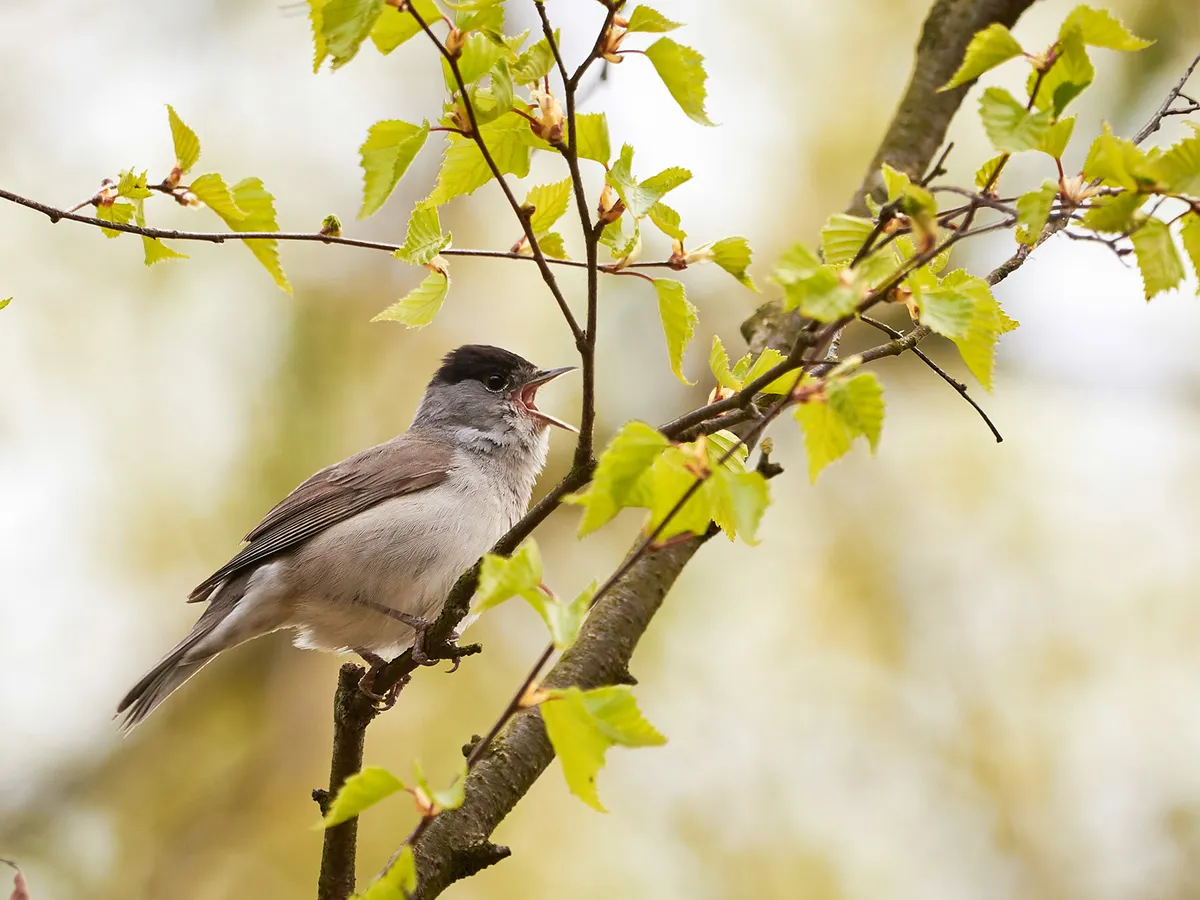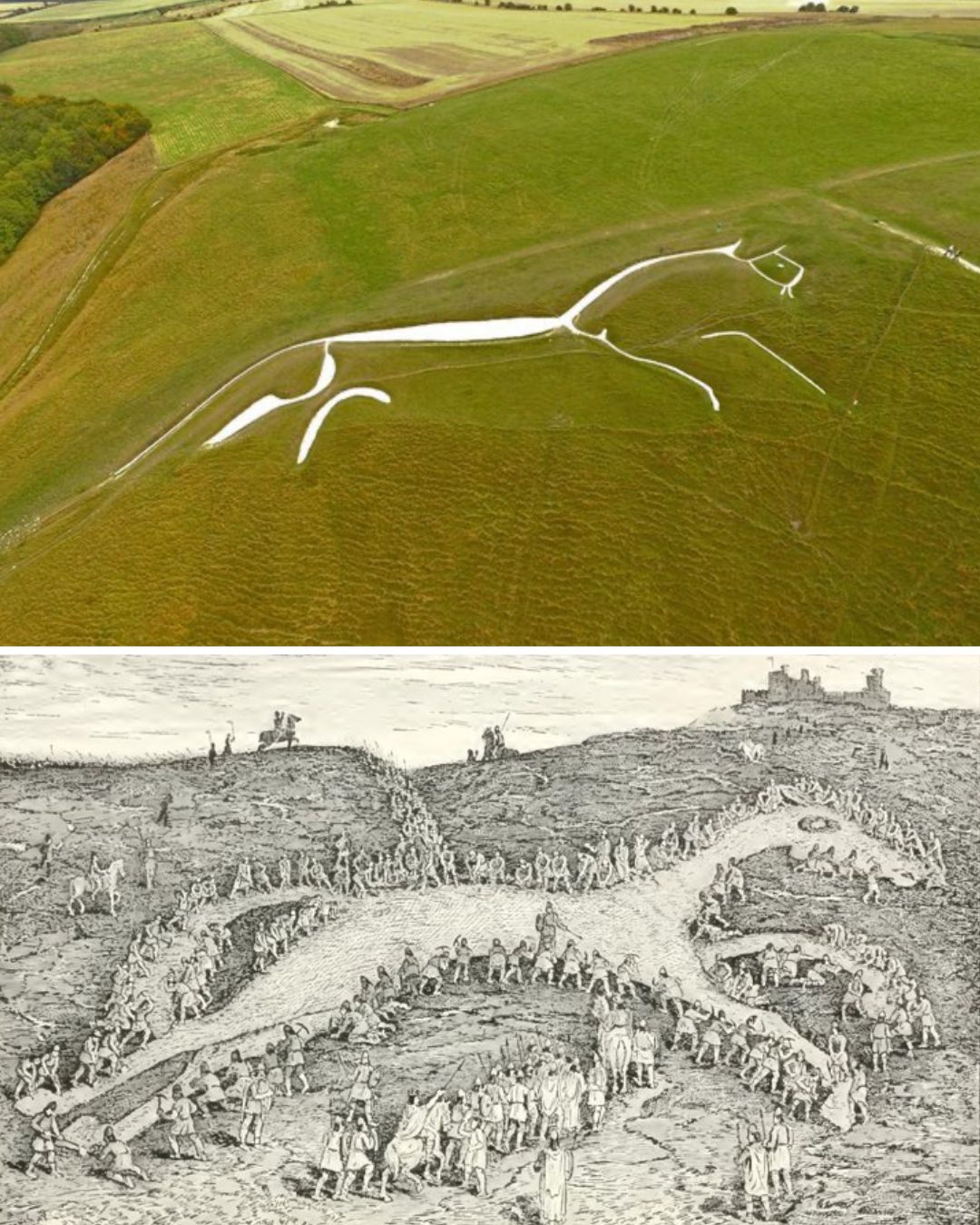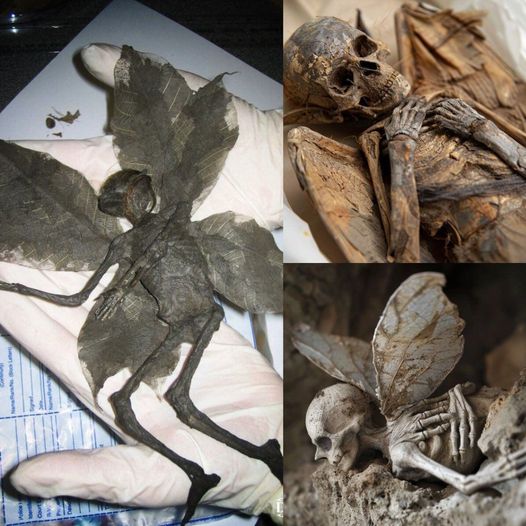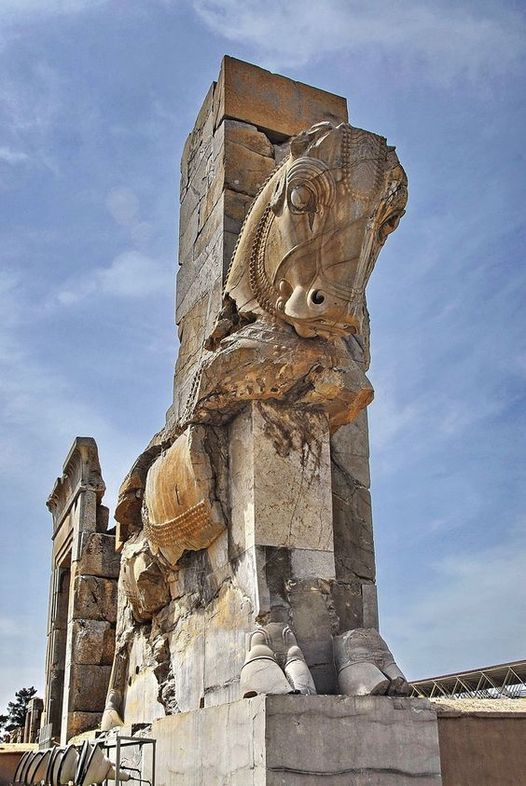Exquisite and Enchanting: The Blackcap, A Bird of Unmatched Beauty
May 12, 2023 by Kieu Trinh

What does a Eurasian Blackcap look like?
The adult male blackcap has mainly olive grey upper parts with a pale grey underside. The face and throat are grey and there is a white semi-circular eye ring around the base of the eye terminating where it joins with a distinctive narrow black cap. This black area extends from the forehead, across the crown to the nape. The upperwing area and the medium length tail are a dark grey. The eyes are a dark brown and the bill slate grey with grey legs. The adult female is similar to the male but overall with a brownish shade and the blackcap is replaced with a brown or rufous cap. The juvenile resembles the female but with more buff colour to the upperparts and a less obvious brown cap.

Eurasian Blackcap with berries in its mouth
What does a Eurasian Blackcap sound like?
As a warbler the blackcap is obviously a proficient singer and can often be heard calling from trees, thick undergrowth and low-lying cover. The call itself is a short hard ‘tac’ or ‘tac- tac’ whilst the song is a loud rapid warbling, often lasting up to half a minute in duration, rising to a high pitched finale.

Female Blackcap
What does a Eurasian Blackcap eat?
During the breeding season the blackcap prefers insects and larvae including grasshoppers, beetles, mayflies and small spiders, which it collects off leaves or from twigs and even through ground foraging, although the latter is not as common. As the end of summer approaches their tastes change and they prefer fruits, berries and seeds. In the springtime they can often been seen balancing on small branches taking pollen from tree blossom.

Perched Eurasian Blackcap
Distribution
Blackcaps are partial migrants and widespread throughout most of Central, Southern and Northwest Europe, the Northeast Atlantic islands including Azores, Cape Verde, Madeira and the Canaries, Western Asia as far as Central Russia and Northwest Africa. During winter months those from the colder regions of Scandinavia migrate south, mainly to countries surrounding the Mediterranean or sub-Saharan Africa. Over the last fifty years or so blackcaps have also regularly migrated from northern Germany to overwinter in the United Kingdom. This oddity is explained by some researchers as being down to the fact that many British gardens have winter bird feeders so food is in abundance and freely available. There are five sub-species of the nominate with slight variations in appearance, predominantly down to subtle differences in the colour shade and to the extent of the area covered by the black cap of the male.

Female Blackcap exposing her wings
Signs and Spotting tips
Forests and woodland areas are the preferred habitats of blackcaps, particularly those with a covering of heavy undergrowth and bushes. Orchards, parks, hedgerows and gardens in more urban areas are also popular. The song of the male is often the first indication of the presence of a blackcap and once spotted the distinctive black cap of the male or rufous brown cap of the female are the primary aid to identification. They are relatively solitary birds although may feed together during the winter months from berry laden bushes.

Juvenile Blackcap
Breeding
Small cup shaped nests are constructed out of grasses and stems by both parents and generally located inside bushes at roughly a metre above the ground. Up to two broods, occasionally three in some of the Atlantic islands, averaging 4 or 5 buff coloured eggs, with grey brown blotches, are laid between April to August. Those birds on the very fringes of their normal range may produce outside of these time parameters. Both parents incubate the eggs which hatch at around two weeks. Fledging occurs roughly twelve days later.

Nest of a Blackcap with eggs

Blackcap feeding chicks






